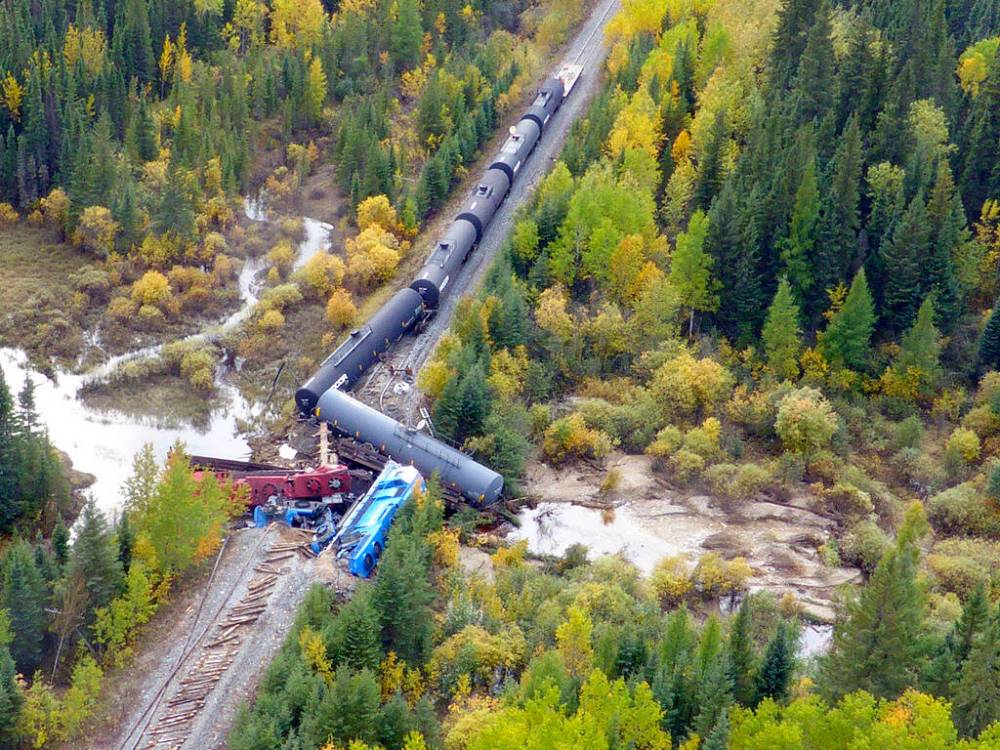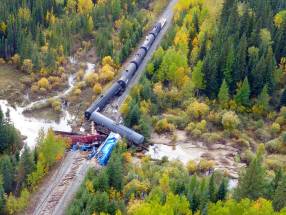Railway safety issues too often ignored
Read this article for free:
or
Already have an account? Log in here »
To continue reading, please subscribe:
Monthly Digital Subscription
$0 for the first 4 weeks*
- Enjoy unlimited reading on winnipegfreepress.com
- Read the E-Edition, our digital replica newspaper
- Access News Break, our award-winning app
- Play interactive puzzles
*No charge for 4 weeks then price increases to the regular rate of $19.00 plus GST every four weeks. Offer available to new and qualified returning subscribers only. Cancel any time.
Monthly Digital Subscription
$4.75/week*
- Enjoy unlimited reading on winnipegfreepress.com
- Read the E-Edition, our digital replica newspaper
- Access News Break, our award-winning app
- Play interactive puzzles
*Billed as $19 plus GST every four weeks. Cancel any time.
To continue reading, please subscribe:
Add Free Press access to your Brandon Sun subscription for only an additional
$1 for the first 4 weeks*
*Your next subscription payment will increase by $1.00 and you will be charged $16.99 plus GST for four weeks. After four weeks, your payment will increase to $23.99 plus GST every four weeks.
Read unlimited articles for free today:
or
Already have an account? Log in here »
Hey there, time traveller!
This article was published 20/12/2021 (1448 days ago), so information in it may no longer be current.
Lax federal enforcement has made railway work in Canada more dangerous than it has to be. Catastrophic wrecks at Lac-Mégantic, Que., Ponton, Man., and Field, B.C., show it’s high time for reform of Ottawa’s policing of rail safety.
At Lac-Mégantic in July 2013, an engineer of the Montreal, Main & Atlantic railway parked his train of petroleum-laden tank cars on a hill east of the town. He left the locomotive running, supplying power to the air brake system. When the locomotive caught fire during the night, the local fire department came and turned off the engine to put out the fire.
The air brakes lost pressure, the train rolled down the hill and derailed in the town, producing an enormous inferno that destroyed the town centre and took 47 lives.
Inspectors found track maintenance problems before derailment

Posted:
OTTAWA — Months before a Manitoba train conductor bled to death in a derailment along the railline to Churchill, track inspectors had flagged numerous maintenance issues in that area, the Free Press has learned.
That spectacular failure convinced rail supervision authorities throughout North America that safety upgrades were needed. Tank-car design was improved and rules about use of brakes were tightened up.
Even so, Canadian Pacific Railway in February 2019 parked a train on a mountainside above Field, B.C., for a fresh crew to take over. As the crew prepared to leave, the train skidded down the track at increasing speed and toppled into the Kicking Horse River, killing the three workers aboard.
Manitoba suffered its own rail safety failure in this series of disasters, while the U.S. firm Omnitrax was divesting itself of the Hudson Bay Railway. The northernmost section of that line, between Gillam and Churchill, had suffered numerous washouts in the spring thaw of 2017, and Omnitrax did not wish to assume the cost of repairing the line.
On Sept. 15, 2018, a train of fuel-laden tank cars derailed at Ponton, south of Thompson, killing the conductor, who bled to death pinned inside the wreck while waiting for help to arrive.
The rail company had greatly cut back the annual work of removing beaver dams near the rail line. Beaver dams have to be removed because they divert surface water from culverts under the rail line, which leads to washouts. The rail company had removed 813 beaver dams in 2015, but only 60 dams in 2017 and another 60 in 2018.
Cutbacks in maintenance are a false economy, because the costs of a wreck far exceed the cost of destroying beaver dams.
Cutbacks in maintenance are a false economy, because the costs of a wreck far exceed the cost of destroying beaver dams. But when the owners have already decided to sell the line, they may have a strong incentive to discontinue maintenance and let the new owners repair the damage. A rail line that is in transition between owners should enjoy exceptionally close attention from the safety regulators.
Documents have come to light showing Omnitrax did not remove beaver dams near the location of the 2018 wreck. Nor did Arctic Gateway Group, which took over the line in August 2018, shortly before the wreck. Transport Canada was aware of these maintenance failures, but they were not corrected in time.
Canada needs better rail safety enforcement than this. There is no mystery regarding beaver dams and the need to remove them to protect roadways and railways from washing away in the diverted streams.
A federal rail safety system that can’t make railway companies take care of rudimentary safety requirements such as applying brakes on a mountainside or removing beaver dams near the tracks is not doing its job. That is unacceptable, as it is quite literally a matter of life and death.







